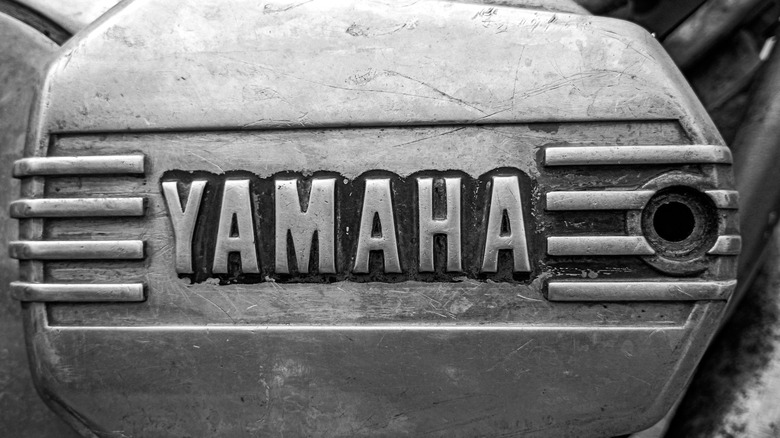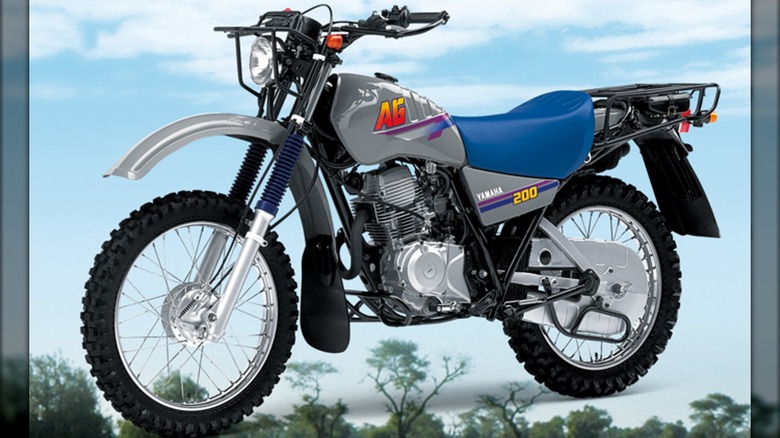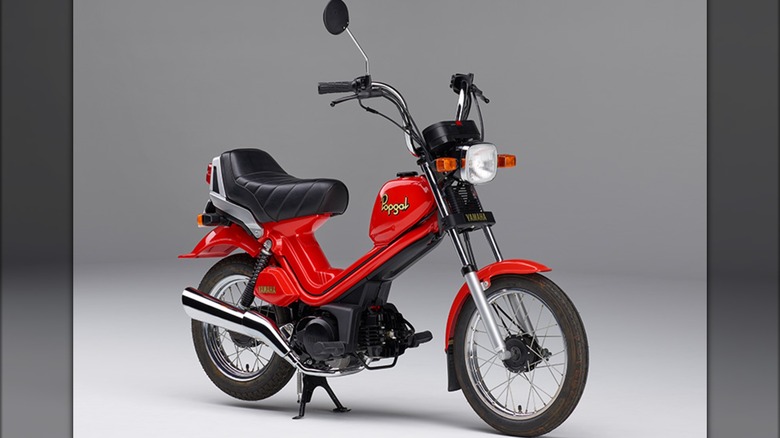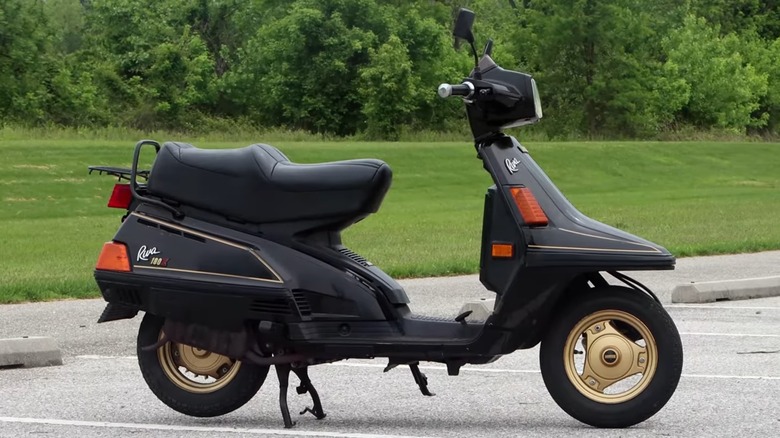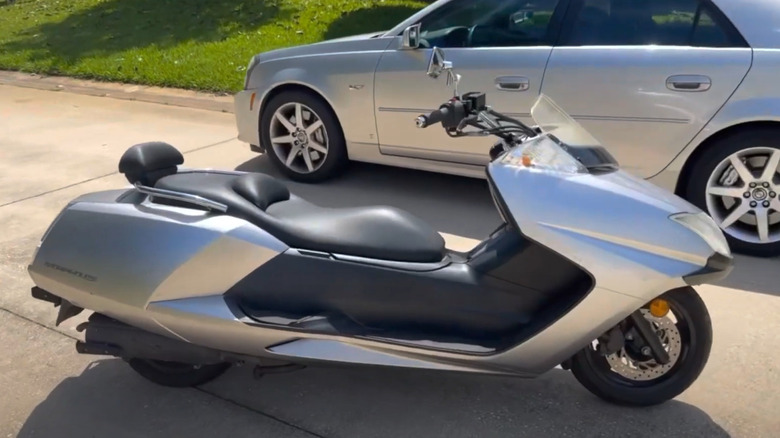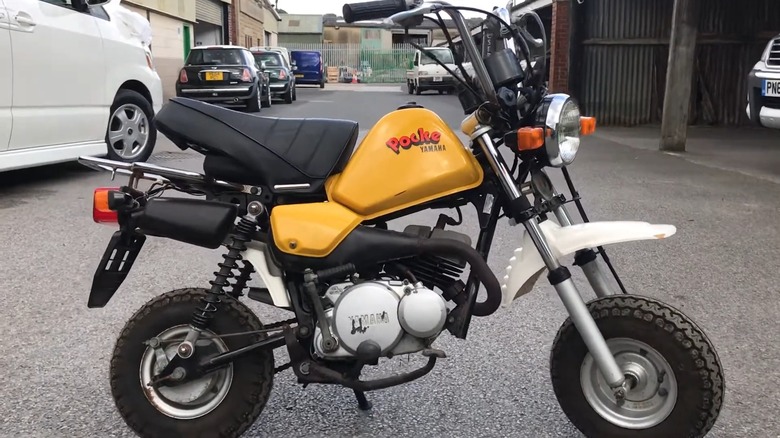5 Obscure Yamaha Motorcycles You May Not Have Heard Of
Of the many motorcycle manufacturers around the planet, Yamaha undoubtedly stands out among the crowd. Since it first introduced a capable off-road machine, the Yamaha DT-1 of 1967, Yamaha has excelled in delivering highly praised models for motocross and more. Not to be pigeon-holed only as a dirt bike maker, Yamaha has likewise produced a seemingly unlimited number of excellent street machines, including legends like the V-Max, XS650, Virago, and, more recently, the technologically advanced and blisteringly quick Yamaha R9. Yet, for every one of these bold and endearing motorcycles you can name, there are probably three you cannot, and sometimes those are the models with the most interesting stories to tell.
Yamaha has built a lot of two-wheelers over the years. Most of them have been motorcycles, but scooters have long been a part of the mix. For all intents and purposes, if it has two wheels and runs on gasoline, it may as well be a motorcycle. Furthermore, product offerings in the various global regions differ, leading to regional models that receive little recognition elsewhere. Other globally-produced models just never sold well. Regardless of how they came to be, here are five Yamaha models you may not have heard of due to their high level of obscurity.
Yamaha AG200
It would be absurd to call a Yamaha AG200 obscure when speaking with someone who has spent time in Africa. After all, the AG200 is produced specifically for that continent, and it is rarely seen elsewhere.
The African continent presents unique transportation difficulties, and reaching many parts of it is impossible without the proper machine. Furthermore, even with the right off-road vehicle, the lack of available parts can leave you stuck many kilometers from help. This is why Yamaha's AG200 is built with a rugged frame and equipped with a durable but simple engine. Its air-cooled 196cc single cylinder produces only about 16 horsepower, but it runs for hours without missing a stroke. When it breaks, it is simple to fix with basic tools and minimal parts. Drum brakes and an enclosed chain keep rocks and debris from damaging critical parts, while racks on the front and back provide needed cargo capacity.
The AG200's simplicity and durability make it perfect for getting medicines to remote communities. Riders for Health has been using them for many years to do just that and help save the lives of Africans in multiple countries. And while the AG200 remains obscure to many of us, it shall continue to do meaningful work across Africa into the future.
Yamaha Popgal
When Yamaha decided to enter the scooter market in the late '70s, it chose to introduce a model specifically marketed toward women in the 1977 Yamaha Passol. That may not have been a big seller everywhere, but it appears to have been a good enough idea for Yamaha to introduce the Popgal a few years later.
Like the Passol, Yamaha marketed the Popgal toward women, with a strategy primarily focused on housewives. It presents as a fashionable little machine with an entirely unique aesthetic. It is rather interesting in that its styling somewhat resembles that of a classic American chopper. It has swept-back handlebars with a little gas tank high up on a sloping crossbar, while the thickly cushioned seat and slick chrome exhaust finalized the look. The wire wheels are also a nice touch. Unlike a chopper, the Popgal's two-stroke 49cc engine is only good for a few horsepower and would struggle mightily on the open American highway.
The two-speed automatic transmission and shaft drive probably appealed to many women buyers, but detailed information is hard to come by. It probably sold only in a few markets aside from its home turf in Japan, but a recent listing for a 1985 model suggests it lasted at least a few years and made it to the United Kingdom.
Yamaha Riva 180
Many products are instantly recognizable as being from the 1980s just because of their unique styling. While many motorcycles, including Yamaha models, were built with more timeless designs that may still look fresh today, the Riva 180 scooter is definitely not one of those.
While many who know about the popular Honda Elite and Helix scooters of this period might think they were the first to bring this boxy and fully enclosed frame aesthetic, the Yamaha predated them both by a couple of years. Introduced in 1983 as a 180cc model, Yamaha took a break in 1986 and reintroduced it with an additional 20cc of displacement. The engines are air-cooled singles capable of accelerating up to about 70 mph. While not the fastest bikes around, they are extraordinarily comfortable. If you manage to find one that's well-kept — and has its notorious auto-choke repaired — Yamaha reliability is built into every model.
A Riva is going to be hard to find. According to info about a recall for '87-'88 models, we can deduce that Yamaha only sold about 1,750 that year in the United States. You can be sure most of those have long ago been wrecked, rusted out, or scrapped. But once in a while, you might be able to pick one up from Bring a Trailer for a couple of grand, and you will be guaranteed to turn heads at every stoplight if you do.
Yamaha Morphous
Many are familiar with the Honda Helix, which was sold from 1986 until 2007, representing a long and successful run for a low-slung, laid-back, and extra-long scooter. Furthermore, anyone who has ridden one can attest to the extreme level of comfort it provides. It kind of feels like riding a living room recliner, but in a good way. Perhaps not content to let Honda have all the fun, Yamaha offered a similar model with updated styling between 2005 and 2008.
While obviously not designed in the 1980s, the styling of the Morphous can be a bit divisive as one of those love-it-or-hate-it kinds of looks. It is long and low, making it extra comfortable, and its modern liquid-cooled and fuel-injected 250cc engine should provide plenty of power for general commuting and around-town driving. As a bonus, the Morphous has three cargo areas including a glove box, trunk, and under seat storage. But still, some might say it has a face only a mother can love.
Total sales figures may not be available, but it should be safe to say they were very low. If this is the look you are into, you'll likely have to travel far to buy one today, unless you're very lucky.
Yamaha Pocke
It seems Yamaha is fond of making tiny versions of its motorcycles. For example, the Yamaha YSR 50 is a pint-size version of a superbike that is a blast to ride and punches well above its weight. Furthermore, small bikes like the Honda Grom and Monkey have done well lately. But back around 1980, it seems that Yamaha wanted to take minibike brinksmanship to a new level ... of small.
The 1980 Yamaha Pocke might be the tiniest street-legal motorcycle ever produced by a major motorcycle manufacturer. Unsurprisingly, it is powered by a 49cc engine with a four-speed transmission and stopped by drum brakes only. Perhaps more surprising is that it rides on wheels with only a 6-inch diameter. The wheel span barely clears the length of an ordinary baguette, and if you are not careful, you might slide off the back just stretching your legs a bit. And while it appears to be a toy, it has all the equipment necessary to be road legal, and you can find examples for sale already tagged and inspected.
Although you might feel conspicuously unsafe riding in city traffic, the Pocke does look like it would be a blast in the right setting. And given its diminutive stature, the 49cc engine likely provides ample power to provide a feeling of cheating death with every ride. With that knowledge, the logical next step is to start looking for one to buy immediately.
